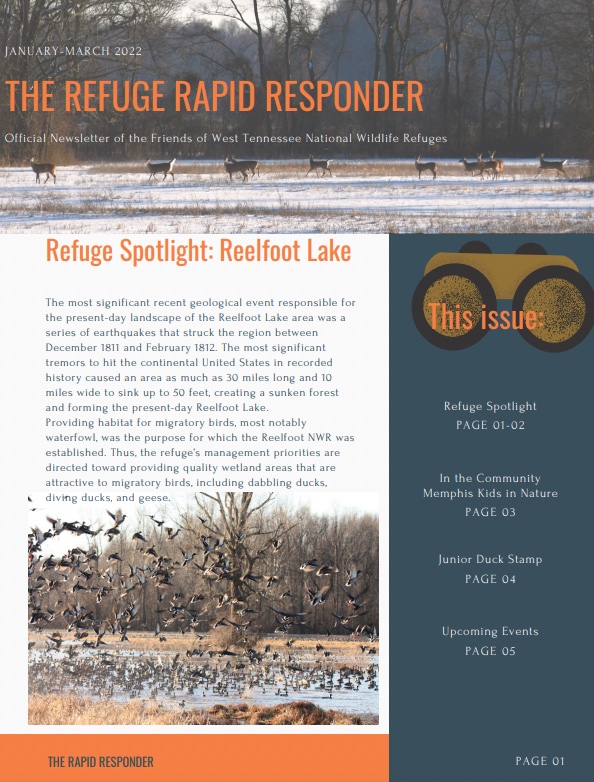 J A N U A R Y – M A R C H 2 0 2 2
J A N U A R Y – M A R C H 2 0 2 2
Official Newsletter of the Friends of West Tennessee National Wildlife Refuges
The most significant recent geological event responsible for the present-day landscape of the Reelfoot Lake area was a series of earthquakes that struck the region between December 1811 and February 1812. The most significant tremors to hit the continental United States in recorded history caused an area as much as 30 miles long and 10 miles wide to sink up to 50 feet, creating a sunken forest and forming the present-day Reelfoot Lake.
Providing habitat for migratory birds, most notably waterfowl, was the purpose for which the Reelfoot NWR was established. Thus, the refuge’s management priorities are directed toward providing quality wetland areas that are attractive to migratory birds, including dabbling ducks, diving ducks, and geese.
Download the January-March 2022 issue or the Refuge Rapid Responder here.
